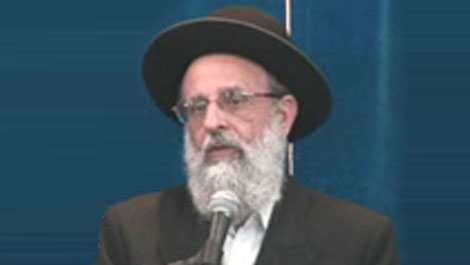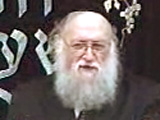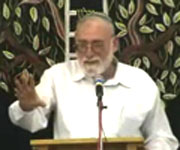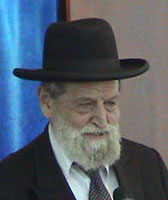Beit Midrash
- Sections
- Chemdat Yamim
- Parashat Hashavua
- Shabbat and Holidays
- Sukkot
- The Essence of Sukkot
While Avraham is linked to the attribute of ahava (love) and Yitzchak to yira (fear), Yaakov is described as having a more direct connection to Hashem without being linked to the same degree with any single attribute. Rav Hutner cites the Gra’s thesis that the special clouds that the sukka models are the clouds that left after the sin of the Golden Calf and later returned. These post-Calf clouds are thus linked to the second set of tablets, given after the sin, which had the word tov (good) written in them because they would never be destroyed (Bava Kama 55a). Rav Hutner explains that something that is linked to a specific situation or concept is transient, in that when the situation ceases to exist, so does the thing that is linked to it. The idea of the sukka is to leave the permanence of the house and create a living that is able to survive even when it is not linked to a person’s more natural environs. Just as Yaakov is connected to Hashem without sole reliance on either of the attributes of his forebears, sukkot shows the versatility of our service of Hashem and, like the second tablets, the ability to survive eternally.
Let us try to apply these deep ideas. There is no question that during the time before the Golden Calf, Bnei Yisrael were on a higher level than they were after it and that the first luchot were more special than the second ones. Similarly, the sanctity we hopefully manage to instill in our house in the course of an entire year surpasses that of a sukka, at least according to this part of Rav Hutner’s thesis. One can even claim that this is a factor in explaining the halacha that a couple during their sheva berachot celebration is, according to Talmudic law (Sukka 25b), exempt from sitting in the sukka. While the gemara gives technical halachic explanations for the halacha, the halacha might have an additional spiritual element. During the week of sheva berachot, the couple is concentrating on building their own home (especially according to the Sephardi approach that full sheva berachot is only in the couple’s home). It is premature to try to show how well they can manage spiritually outside of that home.
Despite these comments, Rav Hutner’s message is eye-opening to contemplate. One should not belittle the contribution of the second tablets. While less miraculous than the first, the fact that they had the ability to survive makes them the proper setting for tov. The sukka also represents the idea that even a temporary dwelling, necessary while we were wandering in the desert and not yet ready to enter Eretz Yisrael, has a message that has echoed throughout Jewish history. Even without our sacred homeland and the Temple in its heart, no matter where we were, we were always able to forge a relationship with Hashem in our temporary homes. We, like Yaakov/Israel, after whom our nation is named, are beyond dependency on any one attribute or setting. We can and must always find the means of seeing Hashem’s protection of us and His interest in maintaining a close relationship – no matter the circumstances.

Parashat Hashavua: How to Ensure a Future of Torah
Rabbi Yossef Carmel | Cheshvan 5786

The Right View of a Jewish Legal System
Rabbi Shaul Yisraeli zt"l | 5771

Parashat Hashavua: “Kings Will Descend from You”
Rabbi Yossef Carmel | Kislev 5786

Interactions between Yehuda and Yosef over the Generations - Part II
Rabbi Yossef Carmel | Tevet 5783

Rabbi Daniel Mann

Encouraging a Child to Criticize His Parent
5774

Tisha B’Av Pushed Off Until Sunday
Av 6 5776

Davening Early on Shavuot
Iyar 26 5777




















